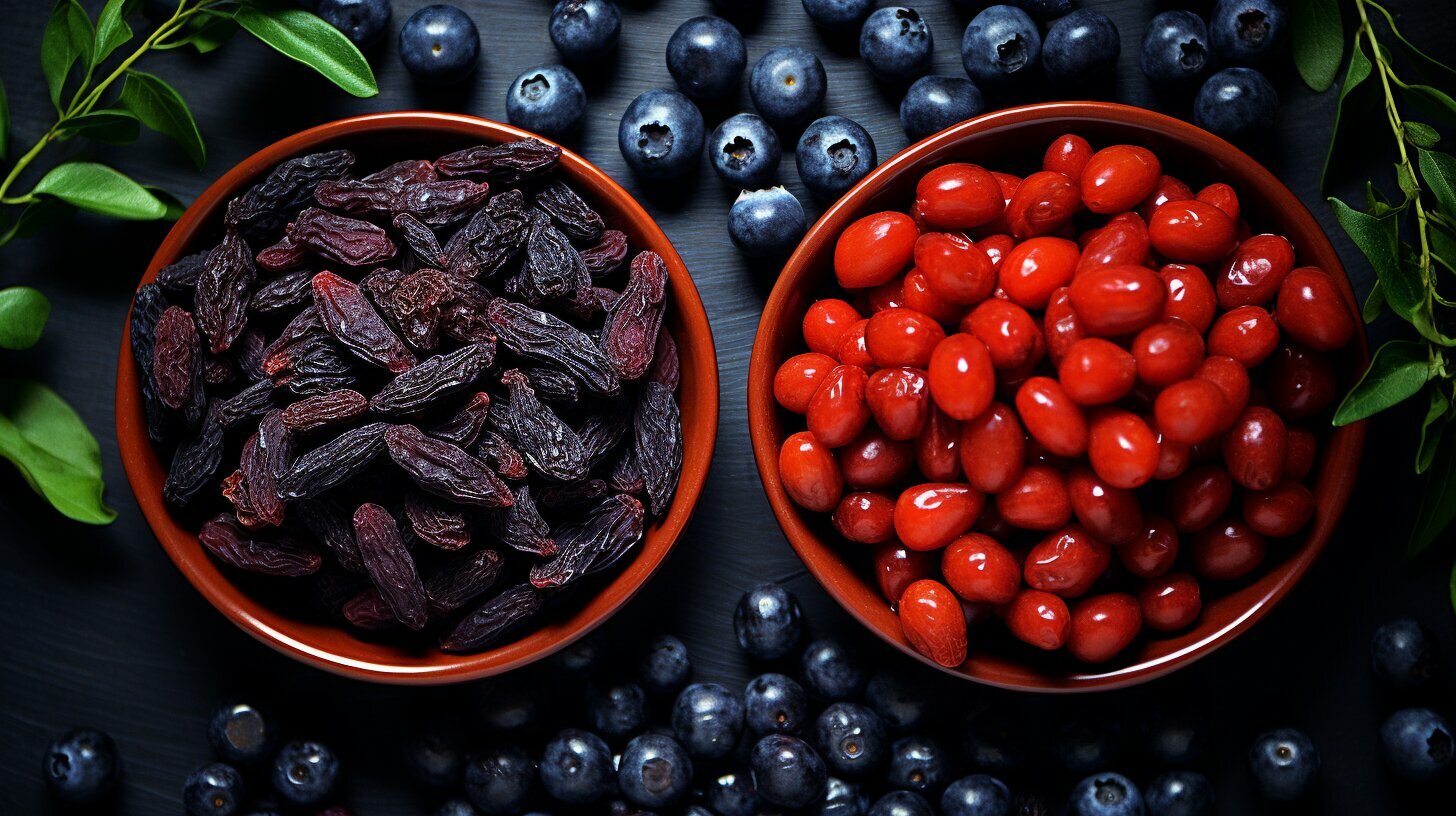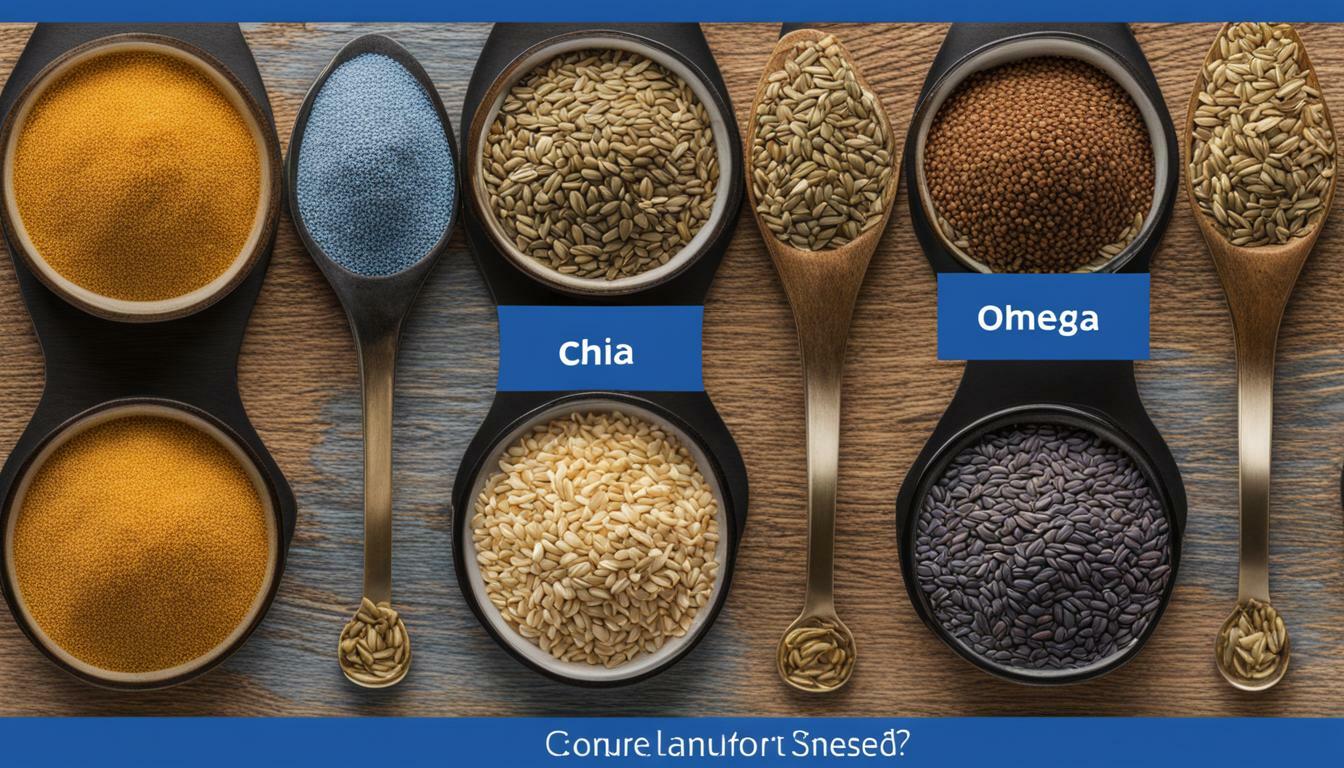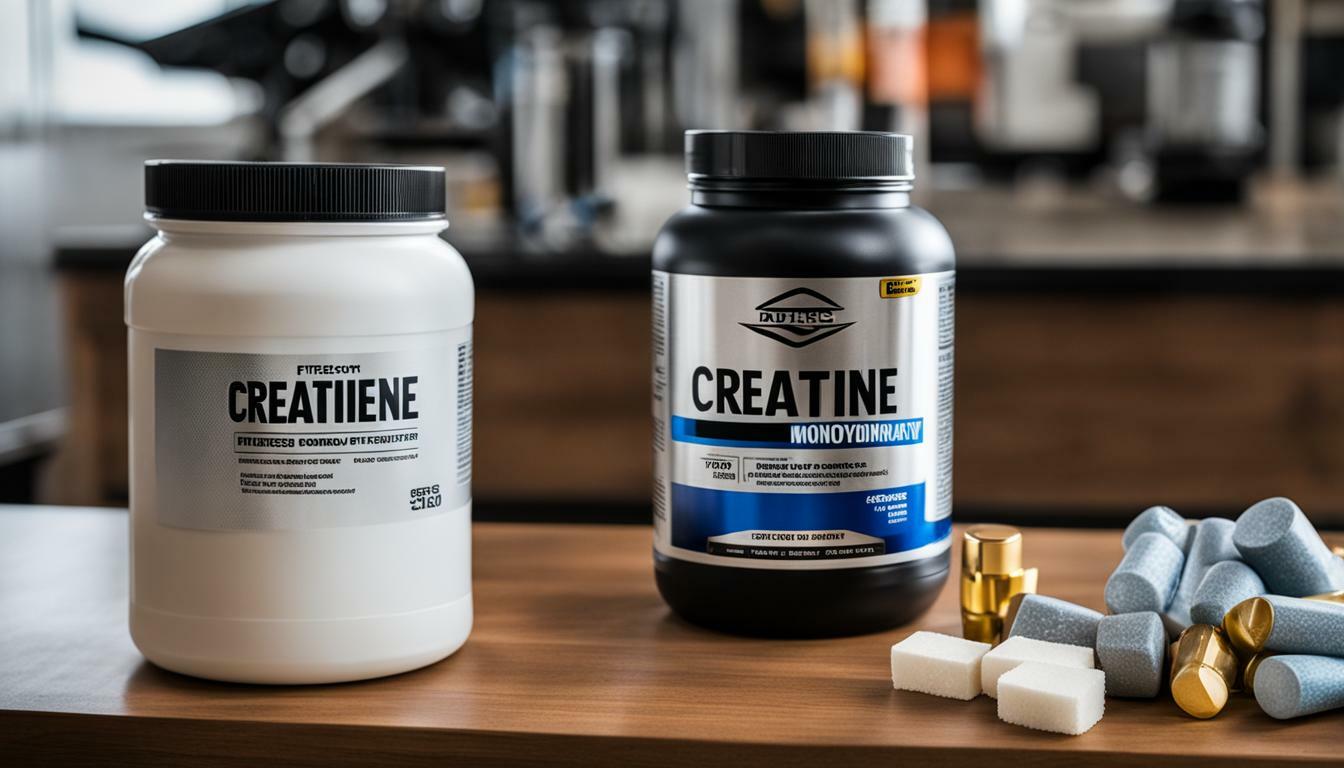Welcome to our article on the difference between acai and goji berries! These two delicious fruits are often referred to as superfoods, offering a wide range of health benefits. Let’s explore their unique characteristics, nutritional profiles, and more.
Key Takeaways:
- Acai berries and goji berries are both superfoods packed with antioxidants.
- Acai berries have a sweet, blackberry-like taste, while goji berries have a tangy, sour flavor.
- Acai berries are native to South and Central America, while goji berries are native to China and Tibet.
- Acai berries are commonly found in the frozen foods aisle, while goji berries are more commonly available in dried form.
- Incorporating both acai and goji berries into your diet can add flavor and nutrition to your meals and snacks.
Geographic Differences and Availability
Acai berries and goji berries not only differ in taste but also in their geographic origins and availability. Acai berries are native to South and Central America, specifically from a tropical palm tree. On the other hand, goji berries, also known as wolfberries, are native to China and Tibet.
Due to their geographic differences, finding fresh goji berries in the United States can be quite rare. However, dried goji berries and goji berry powder are commonly available at health food stores, making it easier to incorporate them into your diet. On the other hand, acai berries can be found in the frozen foods aisle of major grocery stores, offering a convenient option to enjoy their benefits.
Availability of Acai and Goji Products
Here is a comparison of the availability of different acai and goji berry products:
| Product | Acai Berries | Goji Berries |
|---|---|---|
| Fresh | Found in tropical regions of South and Central America | Rarely found in the United States |
| Dried | Available in health food stores and online | Commonly available in health food stores and online |
| Pureed | Available in supermarkets and health food stores | Not commonly available |
| Powder | Available in health food stores and online | Commonly available in health food stores and online |
As seen in the table, acai berries are more readily available in various forms, including fresh, pureed, and in powder form. On the other hand, goji berries are commonly found in dried form, making them convenient for snacking or adding to recipes.
Despite their geographic differences, both acai berries and goji berries offer a range of health benefits and are worth incorporating into your diet, whether fresh or in different product forms. Now that we know about their geographic differences and availability, let’s explore a nutritional comparison between these two superfoods in the next section.
Nutritional Comparison
When comparing the nutritional profiles of acai berries and goji berries, it becomes evident that both berries are rich in essential vitamins, minerals, and antioxidants. These powerful superfoods offer numerous health benefits when incorporated into a balanced diet.
Acai berries are packed with antioxidants, particularly anthocyanins, which give them their deep purple color. These antioxidants help combat oxidative stress and inflammation in the body. Acai berries are also a good source of heart-healthy unsaturated fats, fiber, and vitamin C.
On the other hand, goji berries contain a wide range of antioxidants, including phenolic compounds and carotenoids like zeaxanthin and lutein. These antioxidants have been shown to improve blood circulation and protect the eyes from age-related macular degeneration. Goji berries are also a good source of fiber, vitamin C, and iron.
Nutritional Comparison Table
| Nutrient | Acai Berries | Goji Berries |
|---|---|---|
| Antioxidants | High | High |
| Vitamin C | Good source | Good source |
| Fiber | Good source | Good source |
| Unsaturated Fats | Good source | – |
| Iron | – | Good source |
While acai berries provide heart-healthy fats, goji berries offer a good source of iron. Both berries are low in calories and have a low glycemic index, making them suitable for those watching their weight or managing blood sugar levels.
In conclusion, acai berries and goji berries are both nutritionally dense superfoods with their unique set of health-promoting compounds. Including a variety of berries in your diet can provide a range of beneficial nutrients and antioxidants to support overall health and well-being.
Taste and Preparation
When it comes to taste, acai berries and goji berries offer unique flavor profiles that can add a burst of flavor to your meals and snacks. Acai berries have a sweet flavor, similar to blackberries, and some even describe it as having a chocolatey taste. This makes them a delicious addition to smoothie bowls, where their natural sweetness can shine.
On the other hand, goji berries have a slightly tangy and sour flavor, reminiscent of cranberries or sour cherries. This slightly tart taste makes goji berries a great option for adding a zing to your salads or using them as a topping on various dishes.
In terms of preparation, acai berries are commonly available in pureed form, making them convenient and easy to incorporate into your favorite recipes. You can simply blend frozen acai puree with other fruits and liquids to create a refreshing smoothie bowl. Alternatively, you can mix acai powder into your yogurt or oatmeal for a nutritional boost.
Goji berries, on the other hand, are often found dried. They can be enjoyed as a snack on their own or added to trail mixes and granola bars. You can also rehydrate dried goji berries by soaking them in water or other liquids, making them plump and juicy for use in baked goods or cooking.

Overall, both acai berries and goji berries offer unique taste experiences and different ways to incorporate them into your diet. Whether you prefer the sweet, chocolatey flavor of acai or the tangy, sour taste of goji, these berries can provide a flavorful boost to your meals while offering numerous health benefits.
Conclusion
In conclusion, both Acai berries and Goji berries are considered superfoods and offer a range of health benefits. Despite their differences in taste, origin, and availability, these berries are packed with antioxidants, vitamins, and minerals that contribute to their overall nutritional value.
By incorporating both Acai berries and Goji berries into your diet, you can enhance the flavor and nutritional content of your meals and snacks. Whether you prefer the sweet taste of Acai berries or the tangy flavor of Goji berries, both options provide a tasty and nutritious addition to your daily routine.
So why not explore these two incredible berries and discover new ways to enjoy their benefits? Whether you add them to smoothie bowls, salads, or use them as delicious toppings, Acai berries and Goji berries can help boost your overall well-being and support a healthy lifestyle.
FAQ
What is the difference between acai and goji berries?
Acai berries come from a tropical palm tree in South and Central America, while goji berries come from a shrub native to China and Tibet.
Where are acai berries and goji berries native to?
Acai berries are native to South and Central America, while goji berries are native to China and Tibet.
Are fresh goji berries commonly available in the United States?
No, fresh goji berries are rare to find in the United States, but dried goji berries and goji berry powder are commonly available at health food stores.
Where can I find acai berries?
Acai berries can be found in the frozen foods aisle of major grocery stores.
What are the health benefits of acai and goji berries?
Both acai and goji berries are packed with antioxidants, vitamins, and minerals, which offer various health benefits.
What do acai berries taste like?
Acai berries have a sweet, almost blackberry-like taste, with some describing it as having a chocolatey flavor.
What do goji berries taste like?
Goji berries have a slightly tangy and sour flavor, reminiscent of cranberries or sour cherries.
How are acai berries commonly used?
Acai berries are commonly available in pureed form and are often used in smoothie bowls.
How are goji berries commonly used?
Goji berries are often found dried and can be added to salads or used as a topping on various dishes.
 Skip to main content
Skip to main content


